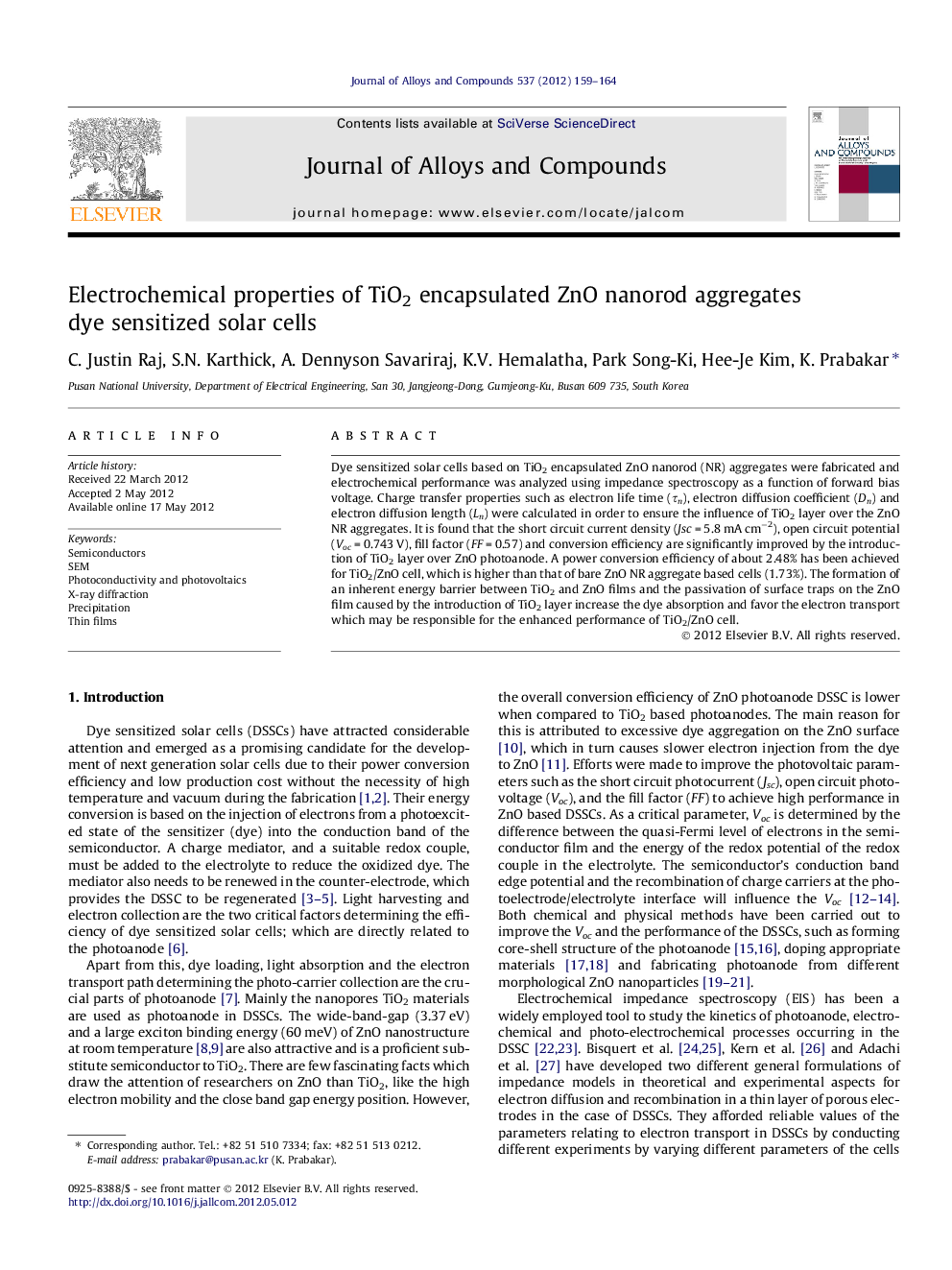| Article ID | Journal | Published Year | Pages | File Type |
|---|---|---|---|---|
| 1615829 | Journal of Alloys and Compounds | 2012 | 6 Pages |
Dye sensitized solar cells based on TiO2 encapsulated ZnO nanorod (NR) aggregates were fabricated and electrochemical performance was analyzed using impedance spectroscopy as a function of forward bias voltage. Charge transfer properties such as electron life time (τn), electron diffusion coefficient (Dn) and electron diffusion length (Ln) were calculated in order to ensure the influence of TiO2 layer over the ZnO NR aggregates. It is found that the short circuit current density (Jsc = 5.8 mA cm−2), open circuit potential (Voc = 0.743 V), fill factor (FF = 0.57) and conversion efficiency are significantly improved by the introduction of TiO2 layer over ZnO photoanode. A power conversion efficiency of about 2.48% has been achieved for TiO2/ZnO cell, which is higher than that of bare ZnO NR aggregate based cells (1.73%). The formation of an inherent energy barrier between TiO2 and ZnO films and the passivation of surface traps on the ZnO film caused by the introduction of TiO2 layer increase the dye absorption and favor the electron transport which may be responsible for the enhanced performance of TiO2/ZnO cell.
► ZnO nanorod aggregates were synthesized by simple co-precipitation technique. ► TiO2 encapsulated ZnO nanorod aggregates photoanode was used for the DSSC. ► TiO2 encapsulated ZnO nanorod aggregates shows an enhanced efficiency. ► The electron recombination and transport properties were studied using EIS method.
